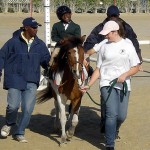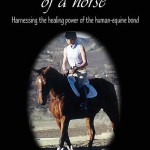Lausanne (SUI), 6 July 2011 – Canadian actor, musician, recording artist, author and horse-lover William Shatner is supporting the HSBC Rising Star category of the FEI Awards, the scheme organised annually by the Fédération Equestre Internationale (FEI), the governing body of horse sport, to celebrate equestrian heroes.
Shatner’s role as Captain James T. Kirk in the science fiction TV series Star Trek, which was first broadcast in 1966, made him a cultural icon and earned him worldwide fame. His more recent role as Denny Crane in The Practice and Boston Legal earned him two Emmy Awards and a Golden Globe Award.
The actor breeds and shows American Saddlebreds and Quarter Horses and spearheads the Hollywood Charity Horse Show, which brings together world-class Reining horses and riders to raise money for a therapeutic riding organisation that works with severely disabled children.
Speaking of the HSBC Rising Star category of the FEI Awards, which is open to equestrian athletes aged 14 to 21 who demonstrate outstanding sporting talent and commitment, Shatner commented:
Continue reading Actor and Horse-Lover William Shatner Endorses FEI’s Star Date in Rio


